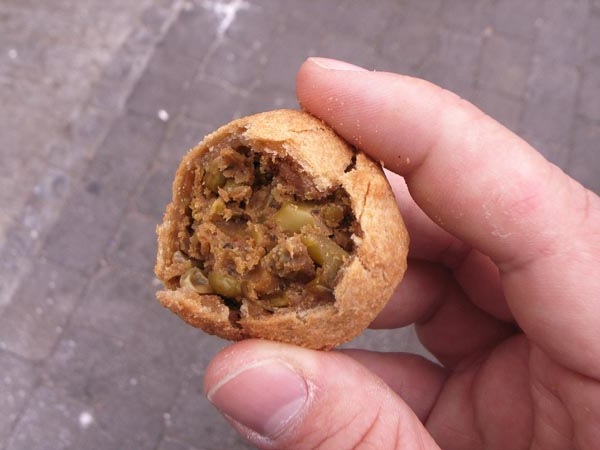Facts About Kachori
Kachori is a cherished spicy snack from the Indian subcontinent, widely enjoyed in areas with Indian and South Asian communities. This snack, known by various names such as kachauri, kachodi, and katchuri, has been a staple in regions like old Indore even before the popularity of samosas surged post-India's partition. Each region in India brings its own unique interpretation to kachori.
In Uttar Pradesh, kachori is typically a round, flattened ball made from refined flour, stuffed with a mixture of yellow moong dal or urad dal, besan (gram flour), black pepper, red chili powder, salt, and assorted spices. Rajasthan is famous for its popular varieties like Kota Kachori and Pyaaj (onion) Kachori. There's also the sweet Mawa Kachori from Jodhpur, which is drizzled with sugar syrup. Gujarat offers a rendition where kachori is a round ball filled with moong dal, black pepper, red chili powder, and ginger paste.
In Delhi, kachoris are often enjoyed as part of a chaat, with a special variant known as 'Khasta Kachori' or 'Raj Kachori.' Another distinctive variant is the sweet upwas kachori, made with potato, coconut, and sugar. These kachoris are typically served with chutneys made from tamarind, mint, or coriander.
West Bengal boasts its own version of kachori, which is softer and smaller, made with white flour and asafoetida. This variation is often a tea-time treat, served with potato-peas curry and Bengali sweets. Bengal also features a firmer variant called khasta kochuri, filled with masala and commonly found in sweet shops.
In North India, you will find kachoris akin to the Rajasthani style, usually accompanied by potato curry or chana (chickpeas). Each region across India infuses its own unique flavors and accompaniments into kachori, making it a versatile and beloved snack in the rich culinary landscape of the country.

 India
India